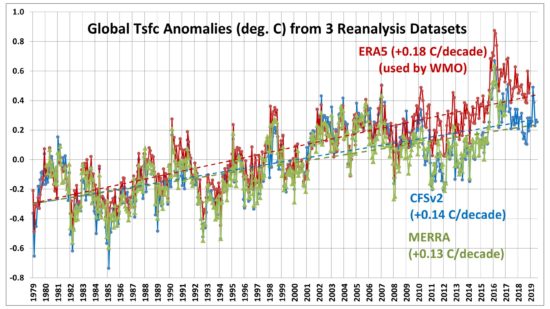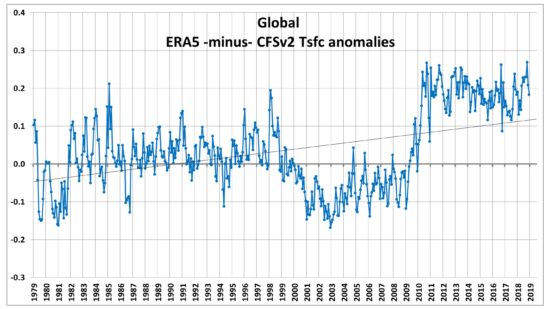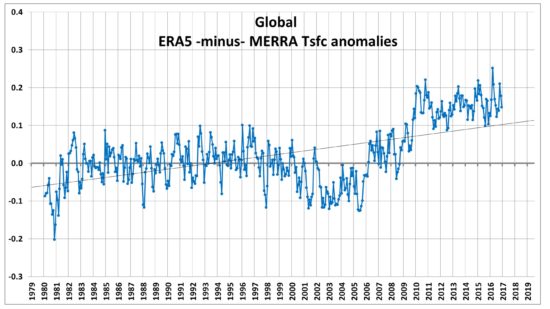“Reading, we have a problem.”
As a followup to my post about whether July 2019 was the warmest July on record (globally-averaged), I’ve been comparing reanalysis datasets since 1979. It appears that the ERA5 reanalysis upon which WMO record temperature pronouncements are made might have a problem, with spurious warmth in recent years.
Here’s a comparison of the global-average surface air temperature variations from three reanalysis datasets: ERA5 (ECMWF), CFSv2 (NOAA/NCEP), and MERRA (NASA/GSFC). Note that only CFSv2 covers the full period, January 1979 to July 2019:

ERA5 has a substantially warmer trend than the other two. By differencing ERA5 with the other datasets we can see that there are some systematic changes that occur in ERA5, especially around 2009-2010, as well as after 1998:


These kinds of changes suggest to me differences in how the satellite deep-layer air temperatures from MSU and AMSU are handled, which through the data assimilation process can affect surface temperatures.
Reanalysis datasets’ dependence upon various data sources is difficult to diagnose because a wide variety of data are included in them: surface thermometers, weather balloons, aircraft, ships, buoys, and a variety of satellites. Because the satellites are the only truly global source, they have the potential to significantly impact global-average quantities.
If the satellites turn out to be the main reason for these differences, this means how the satellites are adjusted as the orbits decay, intercalibrated with each other, and even whether certain problematic satellites are excluded from analysis, all become significant factors in the interpretation of global average temperatures from the reanalyses.
For example, the WMO’s pronouncement that July would be at or near record warmth (which is based upon the ERA5 reanalysis) would then depend on how they did their satellite data adjustments.
So, I am no longer standing by my previous statement that the current reanalysis datasets should be used for determining record warm months. At this point, it’s not even clear to me that reanalysis datasets are better for inferring record high (or low) surface temperatures than our (UAH) satellite dataset is, even though the satellite senses much more of the troposphere than it does of the surface.
This is all very preliminary, and I am open to other interpretations.

 Home/Blog
Home/Blog



